
As summarised earlier, the Australian Bureau of Statistics (ABS) today released labour force data for the month of November, which registered a 0.1% seasonally-adjusted increase in the headline unemployment rate to 5.8%. The result was in line with analysts expectations.
Total employment rose by a seasonally adjusted 21,000 jobs, with full-time jobs increasing by 15,500 to 8,107,900 and part-time employment increasing 5,500 to 3,552,000. However, aggregate monthly hours worked fell by 11.7 million hours (-0.7%) to 1,634.4 million hours.
The participation rate also remained steady at 64.8%.
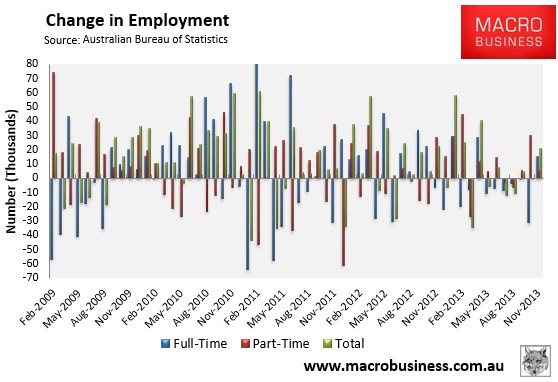
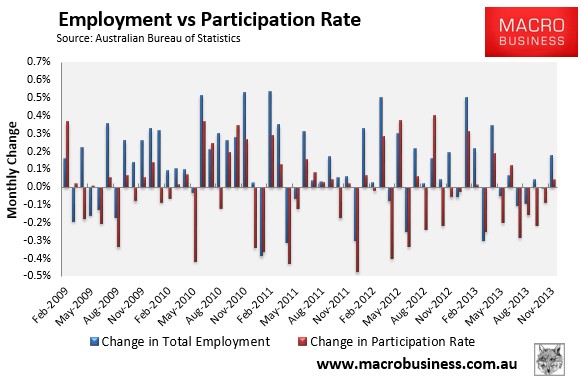
Despite this month’s lift, total employment has essentially flatlined since February 2013 (see next chart).
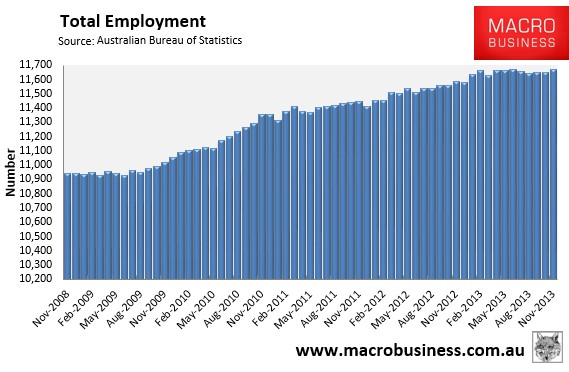
With all jobs growth part-time (see next chart):
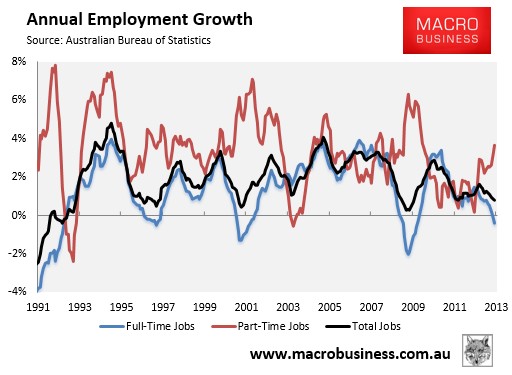
All mainland states, except South Australia, have added jobs over the year (see next chart).
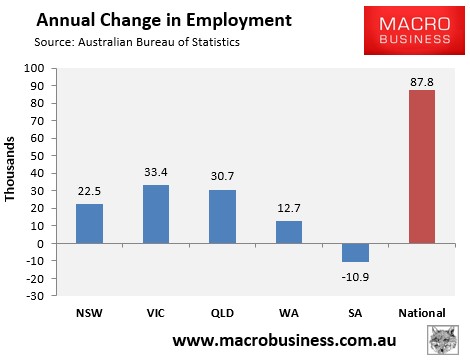
And the Southern States remained the weakest (see next chart).
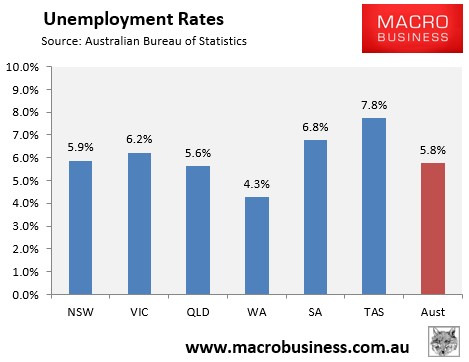
The state seasonally-adjusted figures are notoriously volatile and subject to a big margin of error. As such, the below chart shows the ABS’ trend unemployment rates, which shows Western Australia with the lowest unemployment, Tasmania and South Australia with the highest, and the others bunched together around the national average:
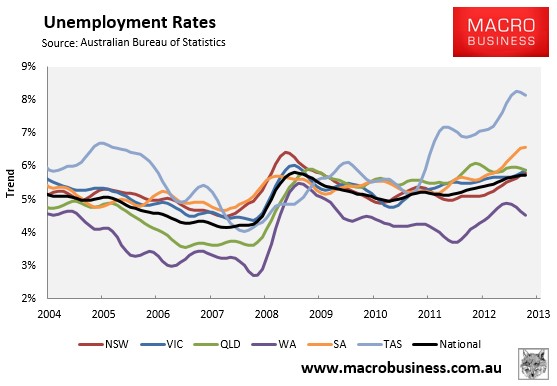
A negative from this release is that the aggregate number of hours worked fell by 0.7% nationally in November and is up by only 0.4% over the year:
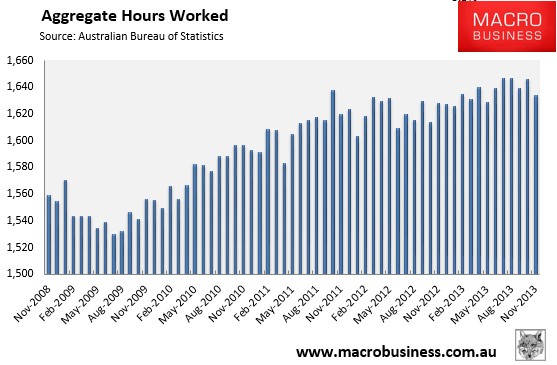
The below chart, which tracks the changes in hours worked on a trend basis, shows a mixed bag, with Western Australia’s labour market recovering, Queensland’s looking strong, New South Wales’ softening, and South Australia’s remaining very weak:
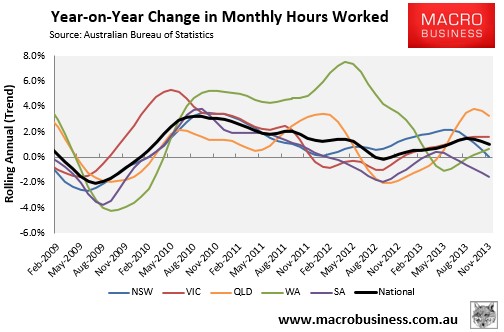
The weakening labour market, combined with Australia’s aging population, has seen the employment-to-population ratio fall to its lowest level in 8.5 years in trend terms (see next chart).
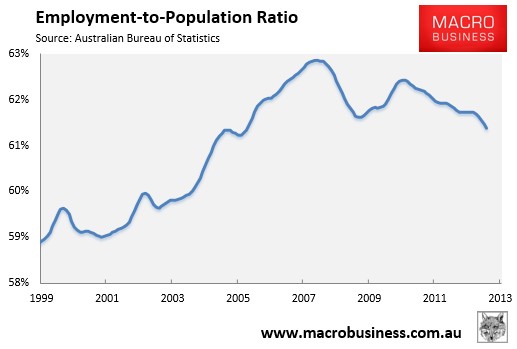
The below chart summarises the annual change in the key employment aggregates:
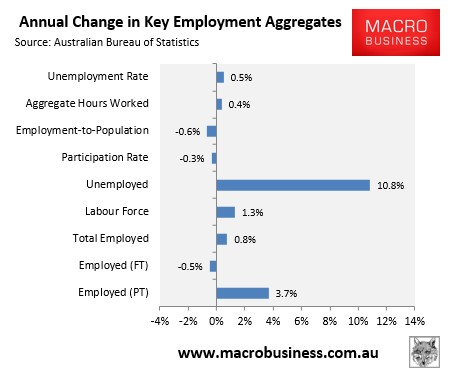
Finally, the underemployment rate improved marginally in November, improving from the decade highs recorded last quarter:
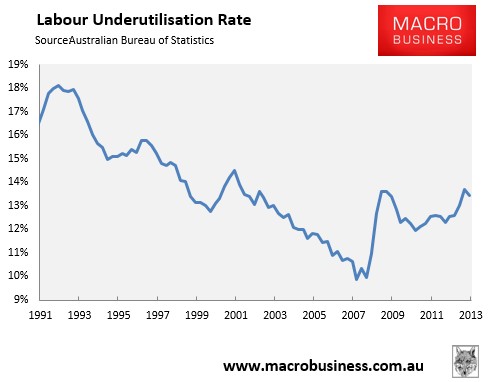
Overall, you can see from the summary chart above that the Australian labour market remains soft, with jobs growth still well below the level required to absorb population growth (with all of the growth in employment over the past year part-time), and both the employment-to-population ratio and participation rate continuing to trend down.

